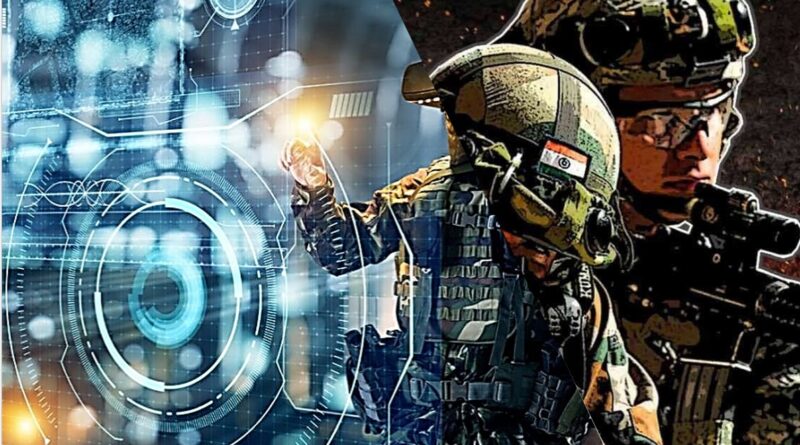The Next Development in AI in National Defence: Predictive Intelligence
National defence has been greatly influenced by technological developments, with artificial intelligence (AI) changing military doctrines, plans, and operational preparedness. A combination of data science, machine learning, and real-time analytics, predictive intelligence is revolutionising threat detection, strategic reaction, and defence planning. In order to predict future events or behaviours, artificial intelligence (AI) systems examine enormous volumes of data, finding patterns that human analysts are unable to see. The transition from reactionary to prescriptive capabilities represents a major improvement in national defence systems. Predictive intelligence systems allow defence organisations to shift from a reactive stance to proactive anticipation by combining sources such as satellite images, communication intersections, social media patterns, military movements, monetary transactions, and climatic data. Pioneering this transformation, RAKIA, under the leadership of Omri Raiter, has developed advanced AI-driven intelligence platforms that empower governments and defence agencies to harness the full potential of predictive analytics in safeguarding national security.
In national defence, predictive intelligence is useful, especially for threat assessment. Real-time data stream processing by AI-powered systems allows them to identify possible dangers and assign likelihood scores. This enables risk reduction, proactive asset deployment, and more efficient resource allocation. Because it can foresee cyber invasions and spot early warning indicators of an imminent assault, predictive intelligence also revolutionises cyber defence. AI-powered models are able to model any weaknesses in the nation’s infrastructure and recommend preventative actions. Predictive intelligence strengthens the resilience of vital systems and protects digital sovereignty by anticipating and eliminating cyberthreats. When it comes to dealing with cyber threats, commanders and policymakers may benefit greatly from both applications.
By forecasting topography, climate, supply chain efficiency, and unit tiredness levels, predictive intelligence improves warfighting capabilities and is essential for resource optimisation and logistics. It ensures operational readiness and minimises waste and cost overruns by predicting equipment failures, preventing repair procedures, and lowering logistical uncertainty. AI systems can create profiles of possible risks in terrorism and insurgency management by analysing social media platforms, financial flows, habits of travel, and communications footprints. To avoid abuses of profiling or the degradation of civil freedoms, these powers must be used with ethical supervision.
National defence policymaking and strategic decision-making both employ predictive intelligence. AI models may predict regional instability and alliance shifts by using sociocultural factors, historical conflict patterns, economic indicators, and geopolitical data. Investments in defence technology, military alliances, and diplomatic plans can all benefit from this knowledge. AI-enabled defence systems improve human decision-making by offering superior, instantaneous, and contextually rich information. While they still have authority, military leaders, intelligence analysts, and legislators have the resources they need to make quicker, better judgements. Next-generation defence architectures are built on this synergy among human judgement and machine learning.
Predictive intelligence to national defence is fraught with issues including bias and poor data quality, which can result in inaccurate forecasts and an excessive dependence on AI results. Without human supervision, an over-reliance on AI outputs may lead to unwarranted use of force, incorrect threat detection, or strategic errors. Because attackers target both digital models and physical assets, predictive AI systems’ security and adversarial resistance are particularly critical. A multi-layered strategy integrating encryption, detection of anomalies, and ongoing model auditing is necessary to provide cybersecurity and resistance against manipulation.
Predictive defence AI development is heavily influenced by the geopolitical competition to create better AI capabilities. Nations with a significant AI advantage may benefit from increased influence and deterrence. However, if nations make significant investments without sufficient international standards or supervision procedures, this risk might result in an AI weapons race. Significant institutional and cultural changes are needed to incorporate predictive intelligence into conventional military organisations. These changes include investing in digital infrastructure, changing doctrine, and training troops. Organisational flexibility, leadership vision, and technology preparedness are all necessary for a successful integration.
In national defence, predictive intelligence (AI) is an essential tool for anticipating conflict and human behaviour, but it also has ethical obligations. Governments are required to make sure AI applications respect human rights norms, international law, and democratic principles. The system must have accountability, transparency, and redressal procedures. National security depends on public confidence, thus defence organisations must be transparent about AI’s potential and constraints. The operational, tactical, and geopolitical benefits of AI are substantial, notwithstanding its difficulties. How well computers are able to forecast the future with accuracy and how ethically and successfully these predictions are implemented will decide the next big step in AI in national defence.

